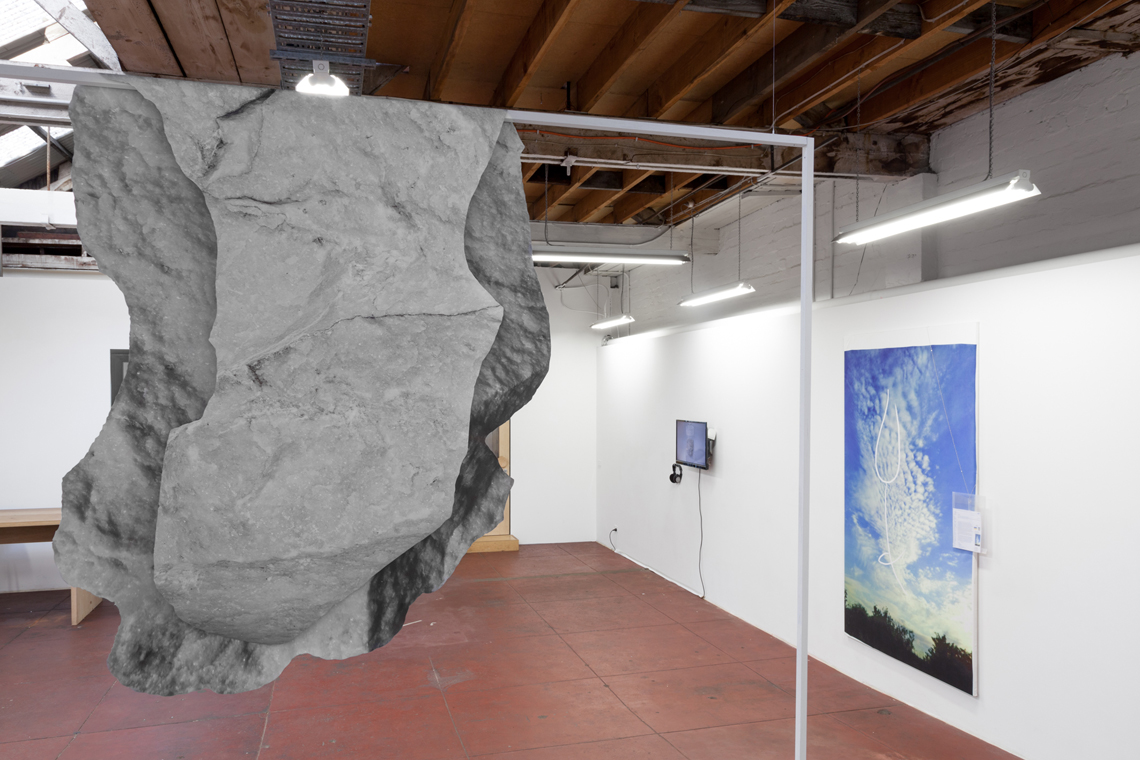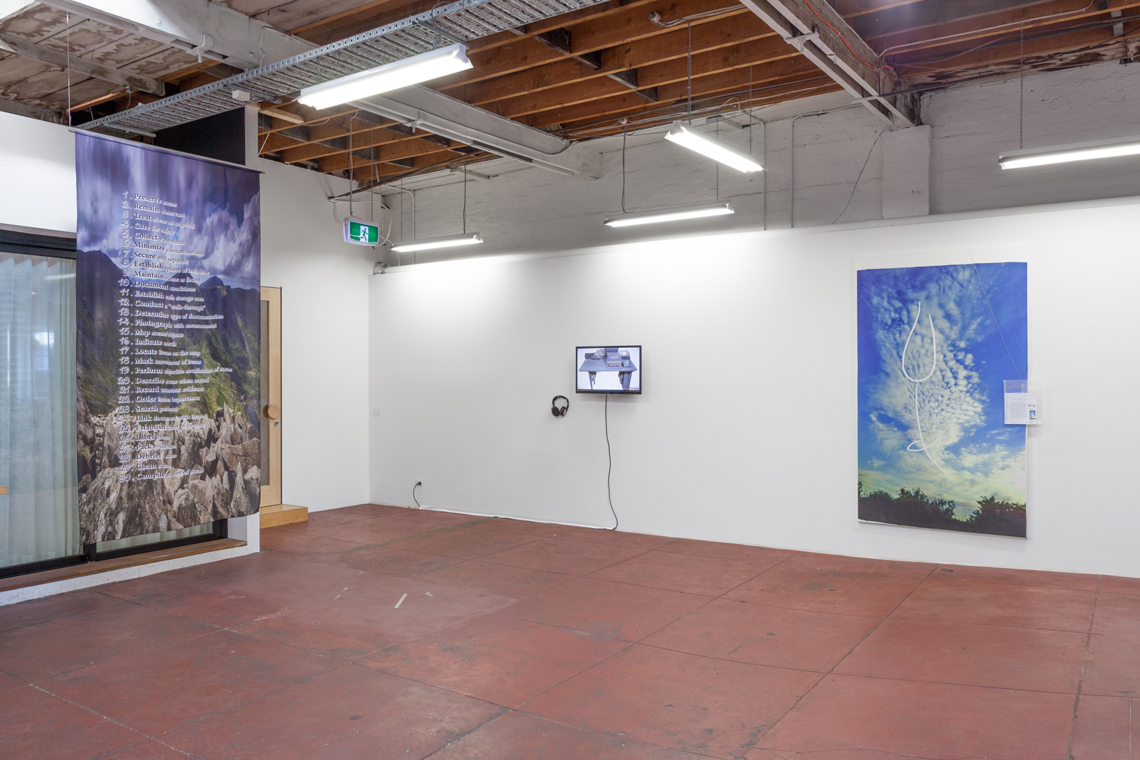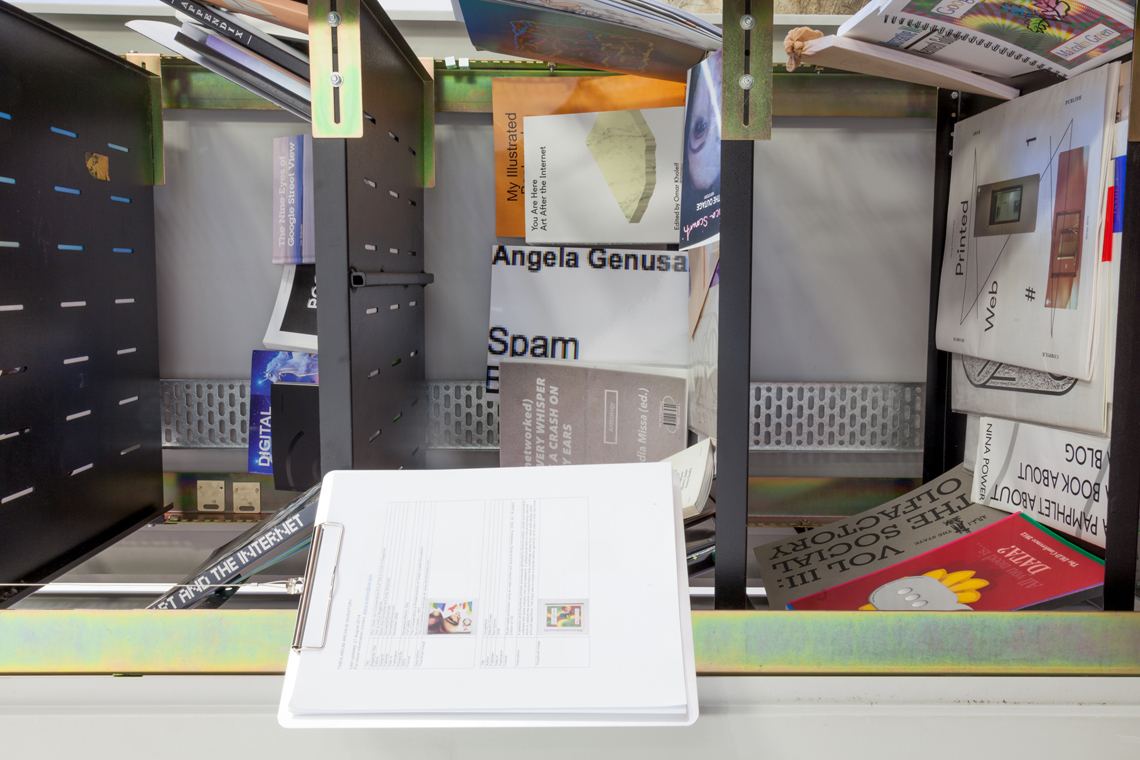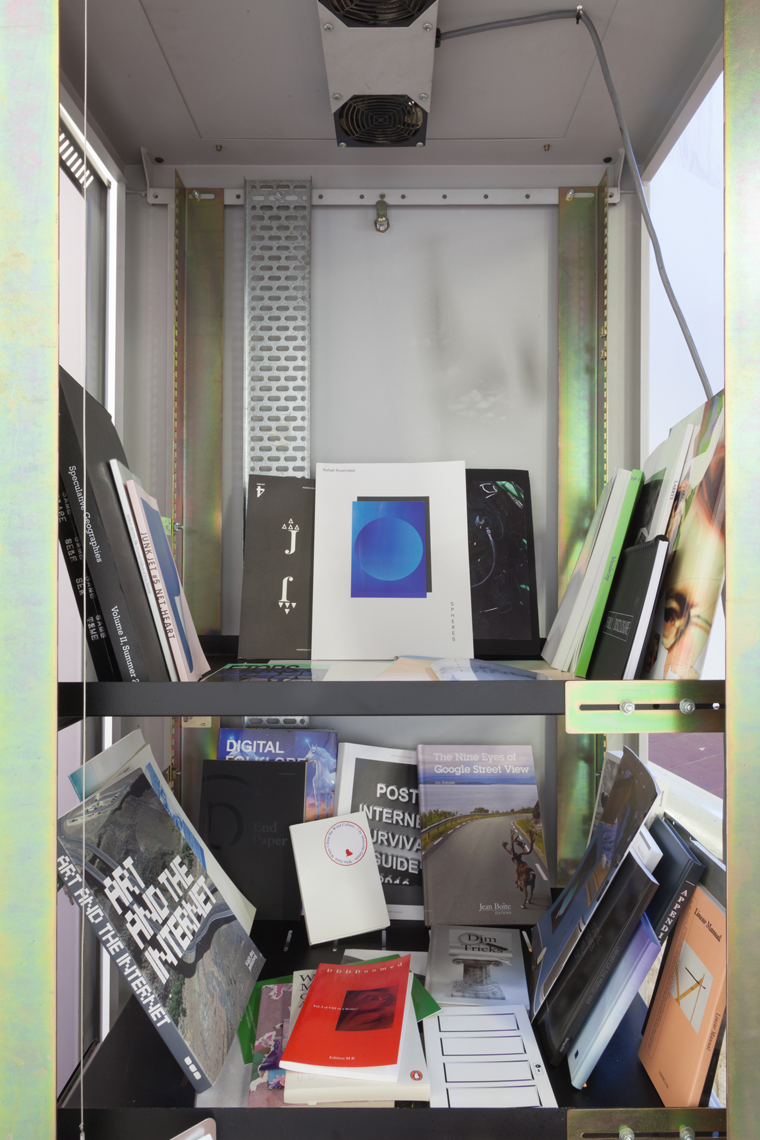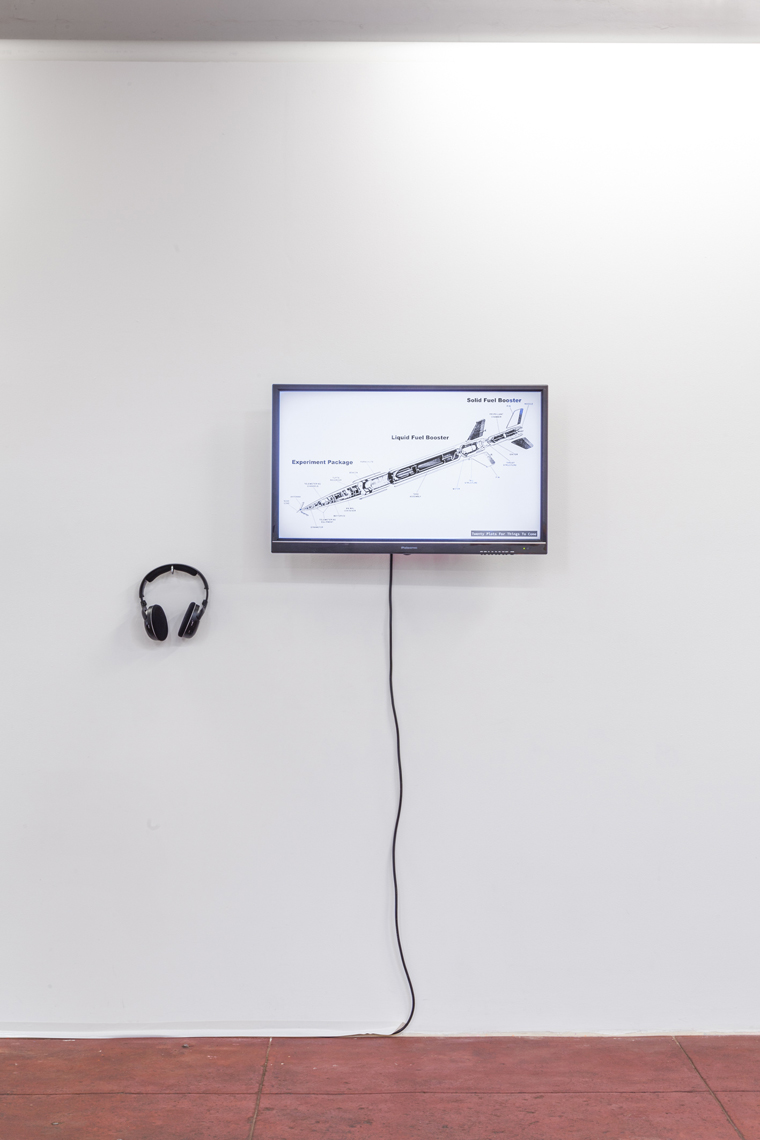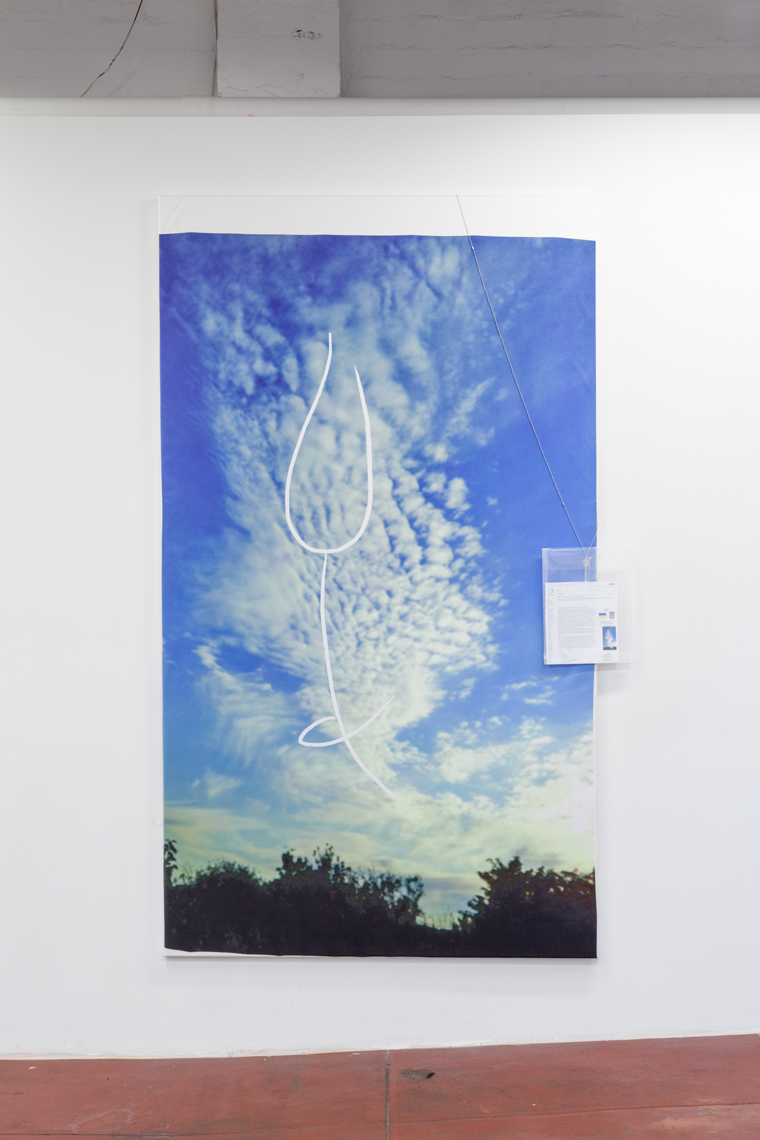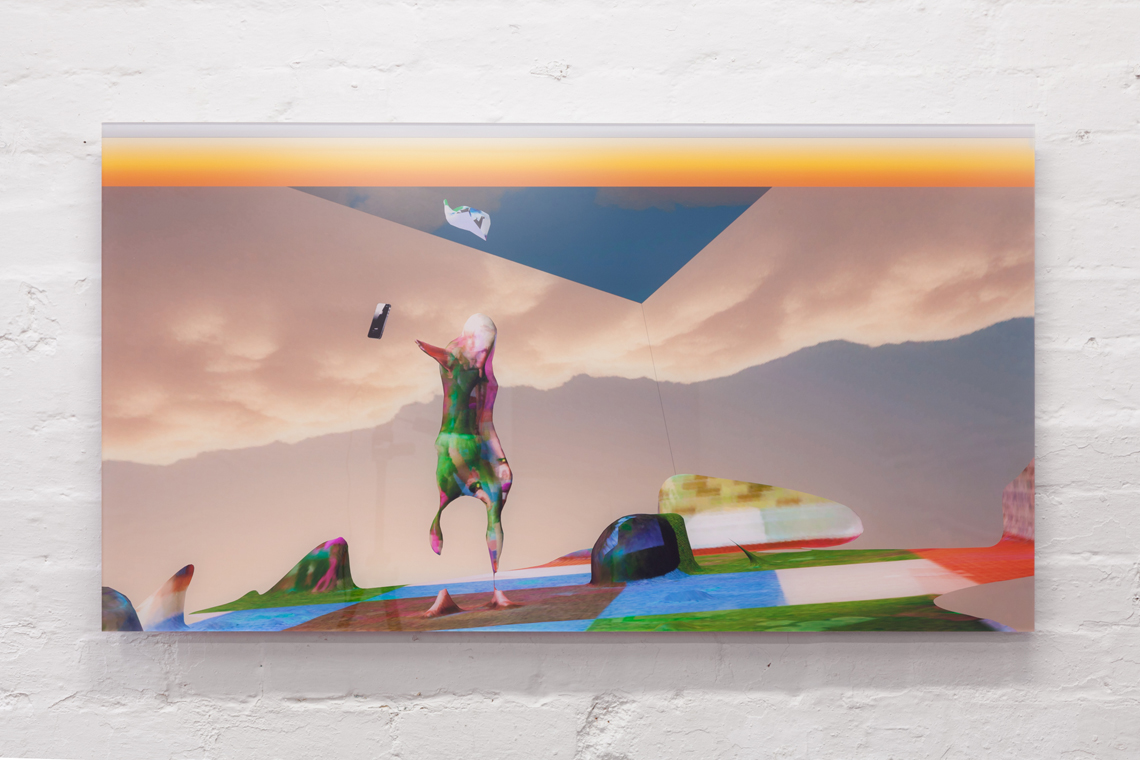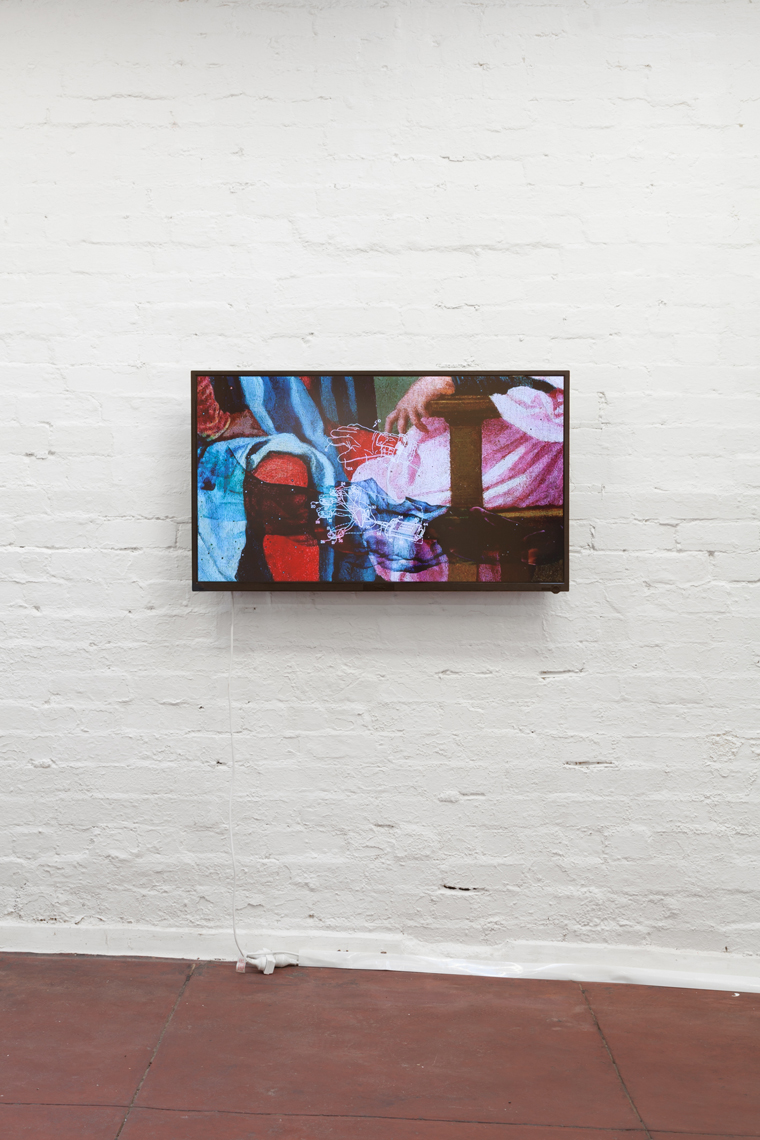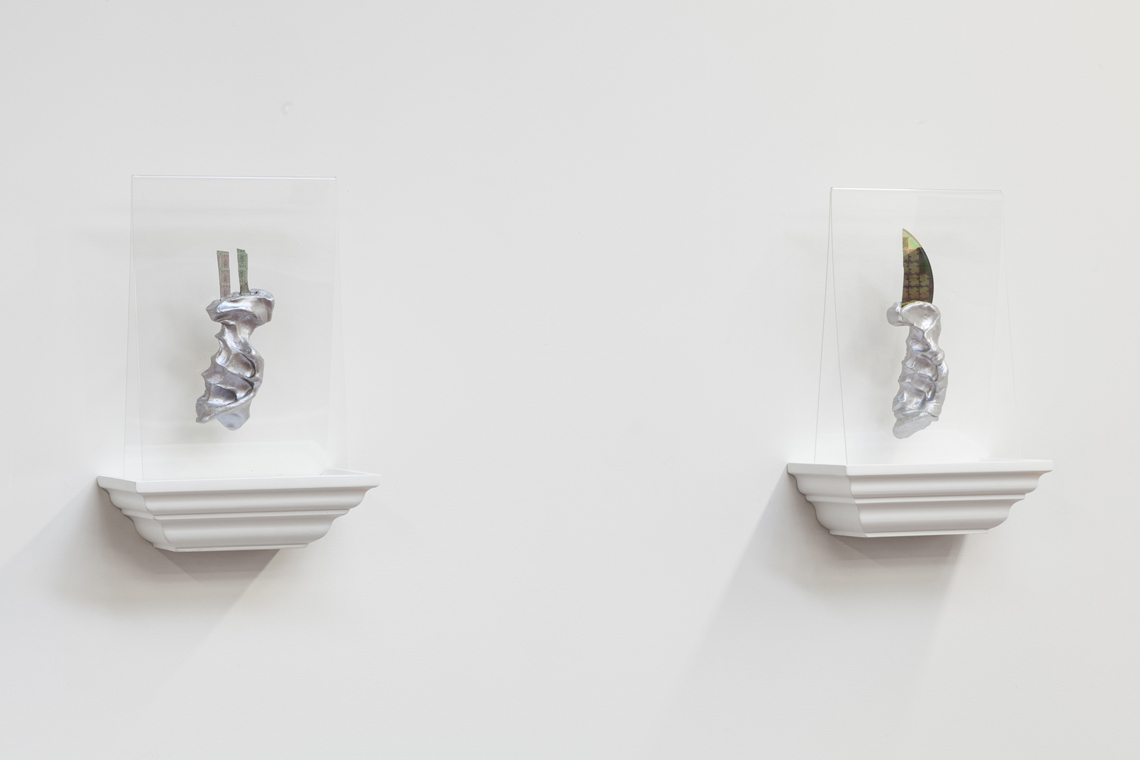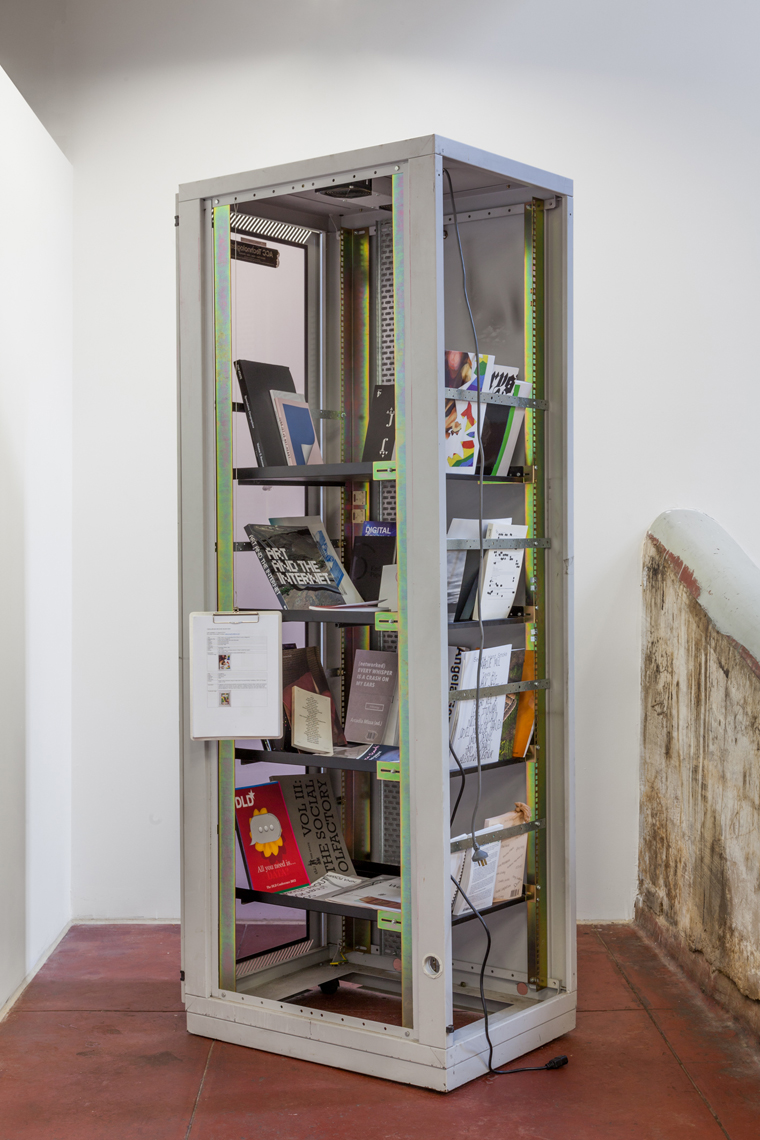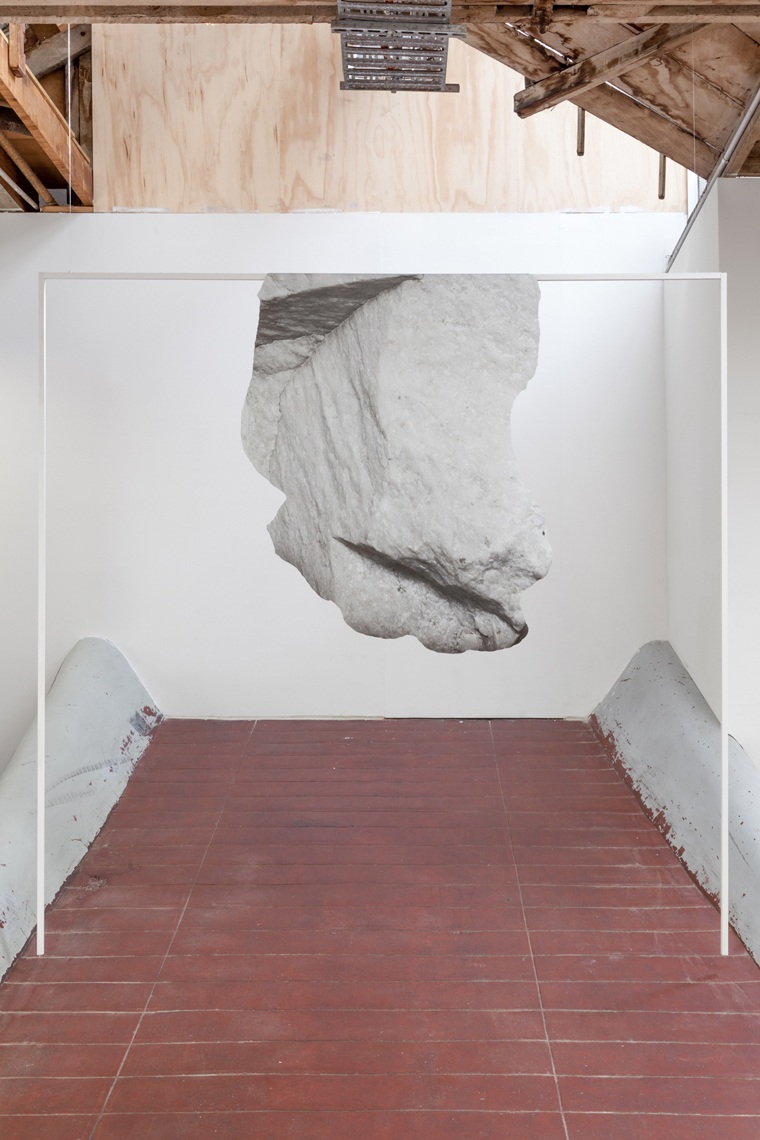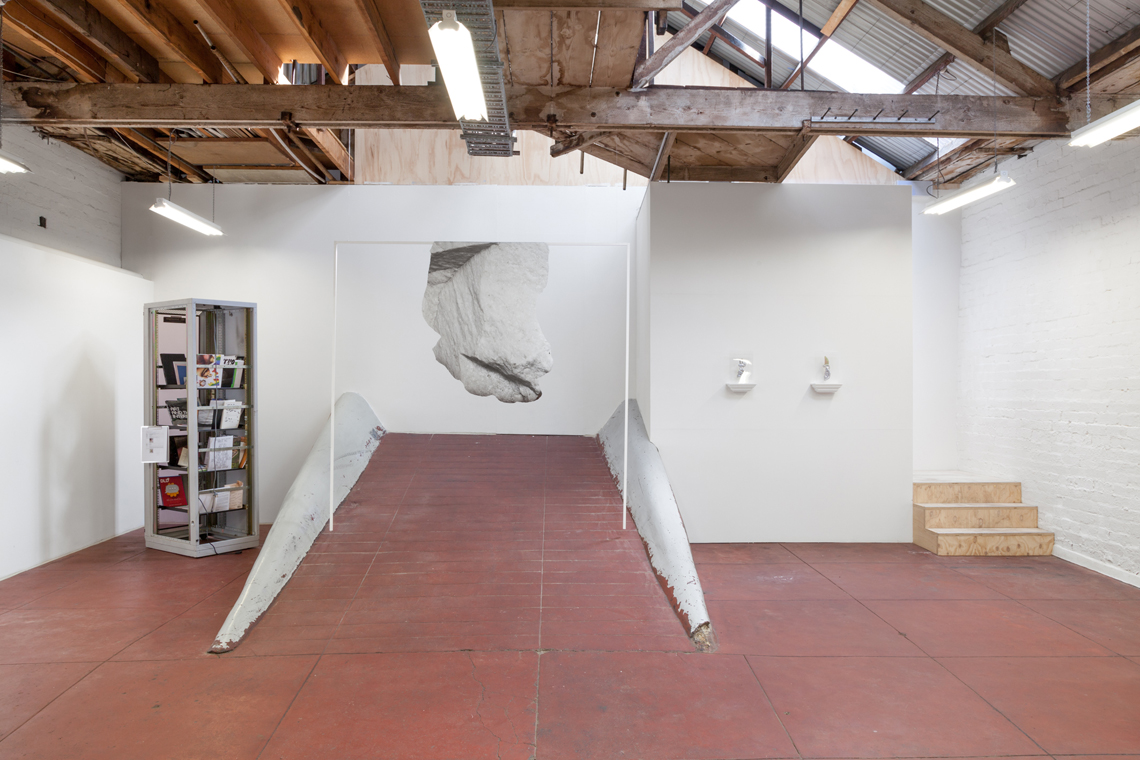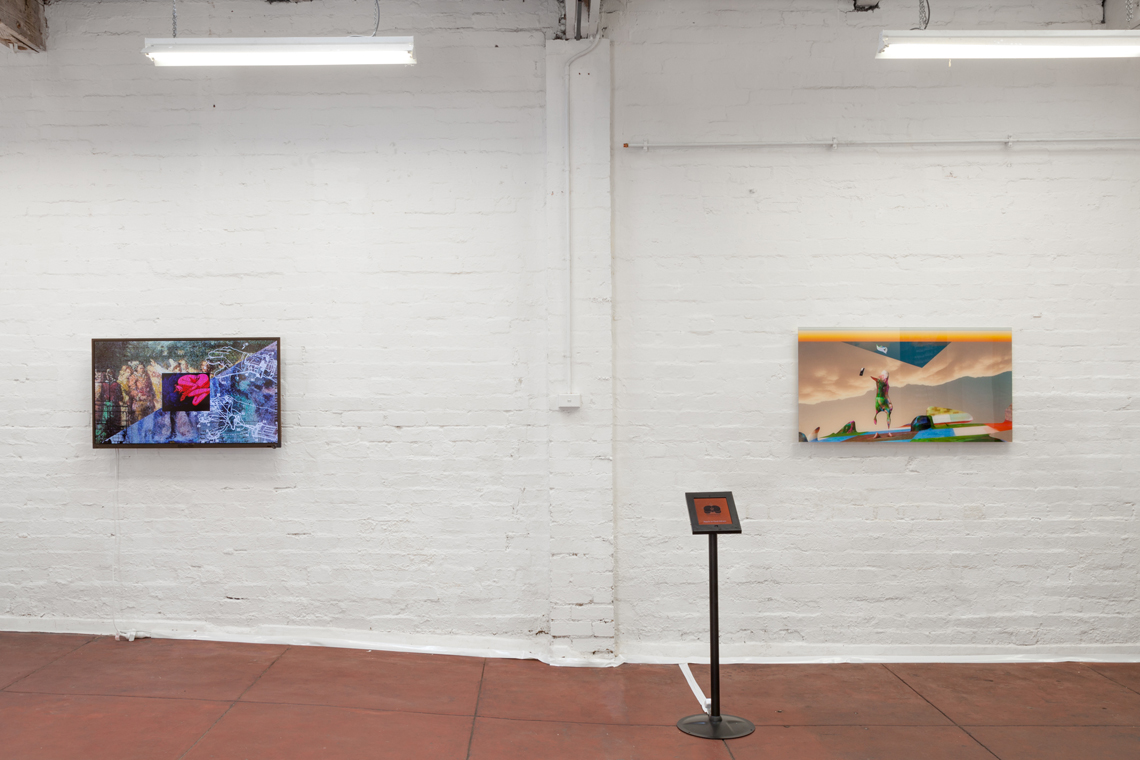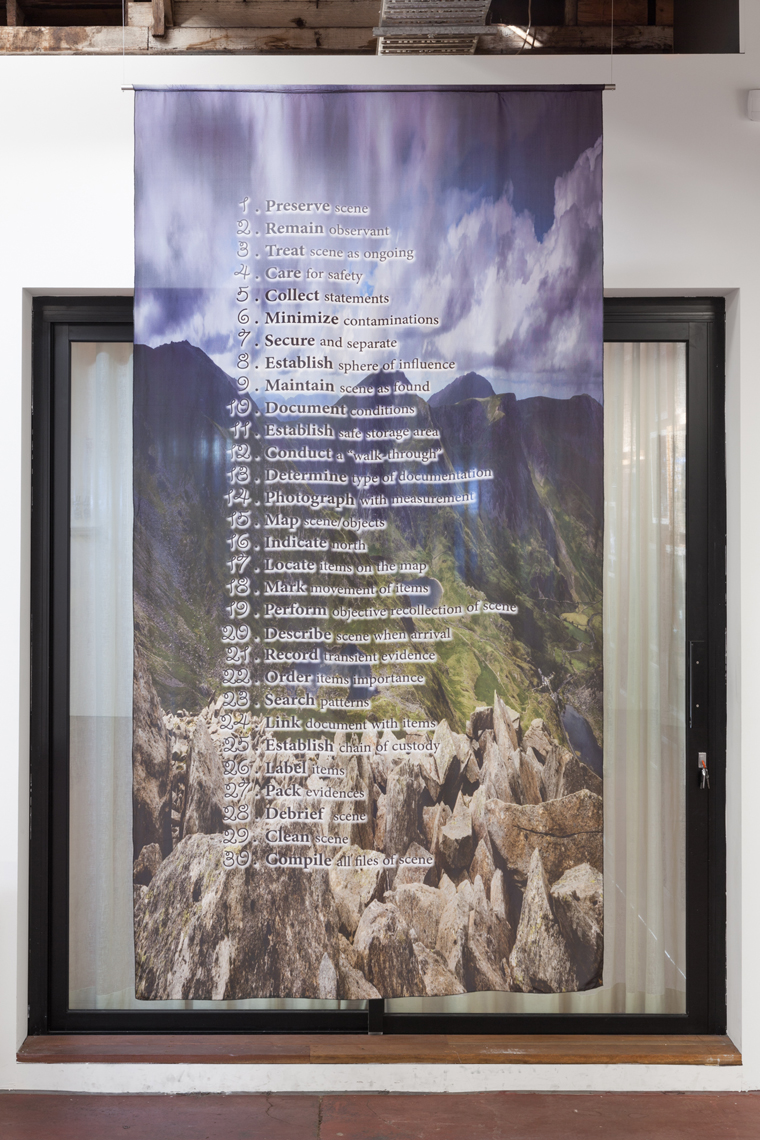Examining information dissemination and the archive on and offline, Tabularium exists as a physical exhibition and a website. Curated by Alana Kushnir and taking its name from the 78 BCE Roman building storing tablet legal documents, it builds on the ongoing project collating and preserving publications not available in a digital format yet drawing from, or reflecting on the internet. The original Roman Tabularium was closed to the public but the works on show at Melbourne’s Slopes gallery examine the modern archive as a public resource, actively created, modified and consumed on a daily basis.
Slopes is a space that exists in a transitional state – sitting in the back of a building currently being renovated into apartments, it will close once these renovations are complete. Right now though, it’s a white cube punctuated by a ceiling open to a rickety-looking wooden catwalk and its designated ‘slope’ (a remnant of its previous use as an underground carpark) jutting into the gallery. It’s a perfect place to present Tabularium, where the remnants of a utilitarian past and pre-ordained non-gallery future mean that the space itself is positioned within the fluctuating lifecycle of the archive.
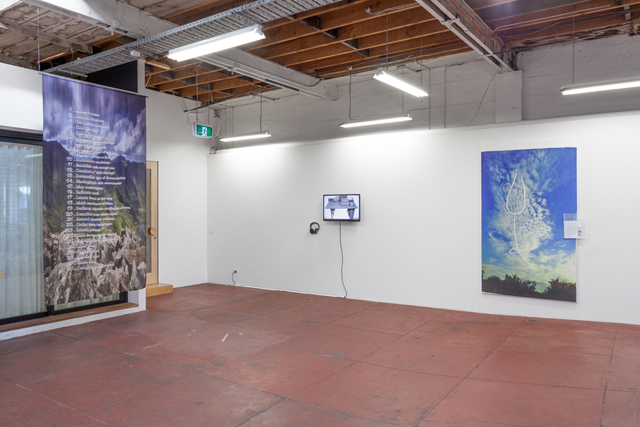
The destruction of tactile documents, from the legendary burning of the Library of Alexandria to the recent loss of museum artefacts in Syria to civil war, are examples of how physical objects of knowledge and information can be lost, but the intangible online one is just as prone. Both Ry David Bradley’s ‘Flowers for Ukraine’ (2014) and Jon Rafman’s ‘Annals of Time Lost’ (2013) examine said extinction. Bradley inserts an abstracted flower into the Ukraine Wikipedia page, printing a copy to record the incursion. Presented along with a large-scale reproduction of the plant, its documentation continues to offer an IRL version of the page that exists long after editors have figuratively ‘deflowered’ the online one. Rafman’s video work, meanwhile, draws from the London’s National Gallery collection to produce juxtapositions of anime characters and old master paintings, building a new archive informed by the personal narratives of its creator.
The archive as physical property is examined within Lawrence Lek’s ‘Memory Palace’ (2014) video, taking its audience on a virtual tour of an imagined Tabularium space in which server racks and monitor screens take the place of inscribed tablets. Katja Novitskova’s knife-like ‘Shapeshifter X’ and ‘Shapeshifter V’ (2013), are made from circuit board wafers and presented within acrylic cases. The circuit boards do not disclose their originally intended use and any information encoded within them is lost. Instead, the museum aesthetic of their presentation prompts the audience to consider them as historical objects used in the distant past.
![Alana Kushnir, 'Tabularium Archive' (2014 – ongoing) (updated list available [here] [https---docs.google.com-document-d-1C8hqwpkFZiecHtsWu4FIQsGLwSS7A2NxoZkRxMfzzTM-edit?usp=sharing]). Photo by Christo Crocker. Image courtesy Alana Kushnir.](https://d23pzp3qb0c2ie.cloudfront.net/wp-content/uploads/2014/09/640-Alana-Kushnir-Tabularium-Archive-2014-----ongoing-updated-list-available-here-https-docs.google.com-document-d-1C8hqwpkFZiecHtsWu4FIQsGLwSS7A2NxoZkRxMfzzTM-edituspsharing.-Photo-by-Christo-Crocker.-Image-courtesy-Alana-Kushnir..jpg)
Other works, also including Tom Penney, Heman Chong and Anthony Marcellini, continue this exploration of documentation and archive construction. Eloïse Bonneviot’s ‘My Forensic Steps 2’ (2014) print on silk presents written instructions on the process of crime-scene documentation within the gallery, then subverts the objective output of those rules through a first-person game hosted on the Slopes gallery website. This subversion continues within Rachel De Joode’s print, ‘Hanging Marble’ (2014), rough marble reduced to two dimensions and exuding an oppositional strength and suppleness, a perfect representation of the way knowledge flows and changes within the archive.
Surrounded by these works in the gallery sits Tabularium Archive, a library of books on a server rack that capture the internet in some way, yet exist only within a physical reality. They’re digital ‘ghosts’ of texts from Kushnir’s personal collection, which fade in and out of view from within the space, reflecting on their status as information not available through online archives. Both the books and the works within Tabularium examine the spaces between the original Tabularium’s static information collection and storage, and the data flows of our current realities. Kushnir and the artists involved have built a modern Tabularium – an evolving space which sets nothing in stone. **
Exhibition photos, top-right.
